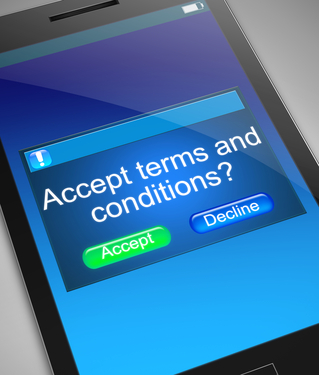
When launching a mobile marketing campaign, it’s essential to remember that failure to comply with mobile channel guidelines is a surefire path to legal trouble. Even huge companies have faced lawsuits because of compliance failure, such as Papa John’s.
"After I ordered from Papa John's, my telephone started beeping with text messages advertising pizza specials," Erin Chutich, a plaintiff in the $250 million 2012 lawsuit against the franchise company, said in a statement. "Papa John's never asked permission to send me text message advertisements."
Chutich and other plaintiffs alleged Papa John’s sent 500,000 unwanted messages in 2010, many of which were sent one after the other. Some plaintiffs said they would receive 15 or 16 texts in a row, even in the dead of night.
The Telephone Consumer Protection Act of 1991 prevents companies from sending advertisements via text message without a consumer permission, i.e. “opting in.”
"We have noticed text message spam is increasing in part because advertisers see it as a great way to get their material directly into the hands of customers," Donald Heyrich, the attorney representing the plaintiffs, said at the time. "We hope this case keeps text message spam out of cell phones."
Plaintiffs sought $500 per unsolicited text. The case was settled in the spring of 2013, where the pizza franchise agreed to a $16.5 million class action lawsuit settlement.
It’s essential to note that even if well-versed in email marketing guidelines, it’s still necessary to review those regarding mass text messages. Many mistakenly believe it’s legally acceptable to send unsolicited text messages so long as a clearly-defined opt-out option is included. This is simply untrue, as there’s no “one size fits all” permission solution. For example, if a consumer gives permission to be entered into a sweepstakes campaign, that does not mean the company may automatically send the person other unrelated texts. The consumer must still give permission to receive other text messages, and not getting this permission is asking for legal headaches.
One of the best ways to ensure a privacy-compliant marketing strategy is to clearly outline what types of communications belong to your mobile program. This outline will usually found under ‘Terms & Conditions’ or ‘Privacy Policy,’ so make sure terms are clear and concise. It’s also necessary to make certain that opt-in language is not unintentionally limiting, as this will again put you in legal hot water. Create terms that cover every potential scenario for sending text messages, thus relieving yourself of any compliance issues.
Double opt-in confirmation helps companies avoid legal problems as well. After the initial opt-in, send a confirmation text to customers requiring an SMS reply. This required step prevents phone numbers from being added to mobile marketing programs by anyone other than the owners. The only exception? When potential subscribers opt-in via an SMS keyword such as ‘JOIN.’ Such actions are obviously by the owners, making double opt-in confirmation superfluous.
Remember, a thorough understanding of text message/opt-in guidelines is your best defense against compliancy trouble.